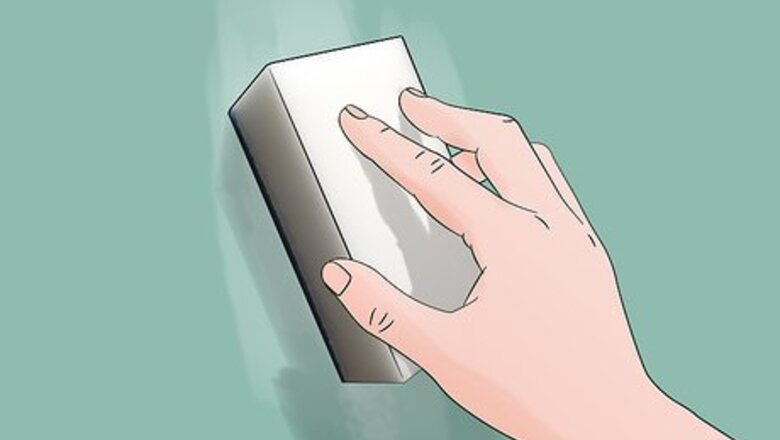
views
Removing Most of the Chalk
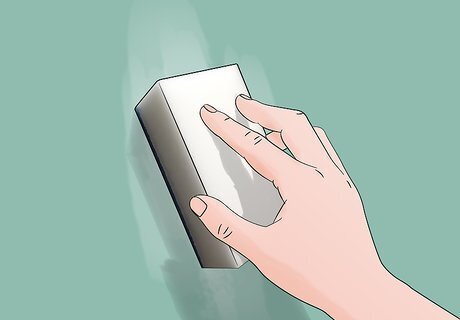
Use an eraser. Make sure it’s clean. The best way to erase a chalkboard is to use an up-and-down motion while cleaning the board. Start by removing the obvious chalk dust with the eraser. Using an up-and-down motion will stop the chalk dust from forming irregular patterns. Begin wiping the chalkboard clean with the eraser by starting in the upper left corner of the board. Wiping up and down across the board, end up in the upper right corner of the chalkboard. A felt eraser is a good choice for cleaning a chalkboard. You can also wipe the board straight across in horizontal lines. Avoid wiping the chalkboard in circular patterns, though. Once you’re done using the eraser, wipe the chalkboard with a clean, lint-free and dry cloth or chamois.
Clean the eraser. If you use a felt eraser to clean a chalkboard, it’s likely that you will need to use it regularly. It’s a good idea to clean the eraser. Clap the erasers together to clean them on a daily basis. This will remove chalk dust from the erasers, so it’s best to do this outside. To clean the erasers further, dip a cloth in warm water, and use it to wipe to erasers to remove more chalk dust from them. There are special cleaning solutions you can use to clean erasers. Look in larger big box stores or office supply stores.
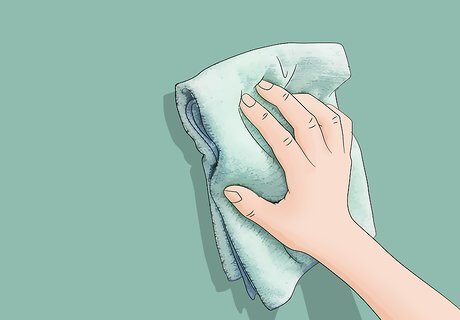
Use a dry cleaning cloth. Some people use dry cleaning cloths to remove chalk from chalkboards instead of the typical felt eraser. You can buy such clothes that are specifically designed for cleaning chalkboards. Look in teacher or office supply stores. They’re designed to be reused and can last up to a year. Try spraying Endust or another dusting product on the cleaning cloth before wiping it on the chalkboard. Use the same up-and-down motion when cleaning the chalkboard with a dry cleaning cloth that you would use with a felt eraser.
Cleaning the Chalkboard with Home-Based Ingredients

Try lemon oil on the chalkboard. The lemon oil will remove chalk dust from your chalkboard, leaving it smooth and clean and free of residue. Lemon oil comes from the rinds of a lemon, and some people use it to clean guitar fingerboards as well. It’s anti-bacterial, and who doesn’t love a fresh lemony smell! Place two teaspoons of lemon oil on a dry cloth. Fold the cloth into a square, and put it into a sealed plastic bag. Lemon oil will also make your chalkboard shinier. After letting it sit for a day, remove the cloth from the plastic bag, and wipe the blackboard with the lemon-oil covered cloth. Try putting two cloths in the bag so you have another one for the next day as you should clean the chalkboard daily.

Try soda pop! Coke sounds like it would make your chalkboard sticky and unusable, but a lot of people have used the soda product as a cleaning agent, and they report that it cleans chalkboards more thoroughly than water. Pour a half cup of Coke into a bowl. Take a damp cloth, and dip it into the bowl, getting some of the Coke on the cloth. Any brand of soda should work, though, including Pepsi or diet soda. Take the Coke-covered cloth, and wipe it on the chalkboard. People who have tried this report that it dries without leaving behind chalk dust. It’s also probably not going to make your chalkboard sticky unless you use too much. Dab the cloth into it. You don’t want enough Coke on the cloth that it’s dripping from the cloth. The soda may actually make it easier for chalk to adhere to the board.

Use vinegar and water. Try mixing water and white vinegar together, and use a cloth to wipe the chalkboard with it. Not only will this concoction smell good, but it will also prevent streaks. White vinegar is the best choice because other vinegar (such as balsamic) has coloring that can harm the blackboard’s appearance. Add half a cup of vinegar to four cups of lukewarm water before putting a cloth into the mixture. Wipe the board down. Wring out the cloth before wiping the board so it’s not dripping wet. It’s best to let the chalkboard air dry when you’re done removing all of the chalk dust from its surface. It’s possible to use only water to wipe down a chalkboard; the vinegar increases the cleaning power.
Using Chemicals to Clean a Chalkboard

Try water with household cleaner. Sometimes chalkboards need tougher cleaning action. This is especially true if your chalkboard is marred with ink, fingerprint, or crayon stains. Apply a mild cleaner to water, such as a few drops of dish soap, and use it to remove the stains with a cloth. Choose a non-oily cleaner that is not abrasive. You could try to clean the chalkboard with only water and a rag, but when it dries it may have gray residue on it from the lingering chalk. Applying water to a chalkboard will cause a phenomenon known as ghosting. This means that, even though you’ve wiped away the chalk dust, there’s an outline left. Applying cleaner to the water should reduce the chances this will happen. You could use a squeegee to remove the water solution from the chalkboard after wiping the chalkboard with it.

Buy commercial chalkboard cleaner. There are special commercial chalkboard cleaner specifically designed for this purpose. It can be found in many teacher and office supply stores, as well as some big box stores. Some of the commercial cleaners are water-based and premixed. They come in spray bottles with applicators on the bottle’s top. Spray some of the cleaner on a towel, and use it to wipe the chalkboard clean. Other commercial cleaners are foam-based. Some cleaners can damage the chalkboard’s surface if you use them repeatedly. Commercial cleaners come in difference scents, such as mint. Foam cleaners can prevent streaking because the foam is less likely to drip down the board.
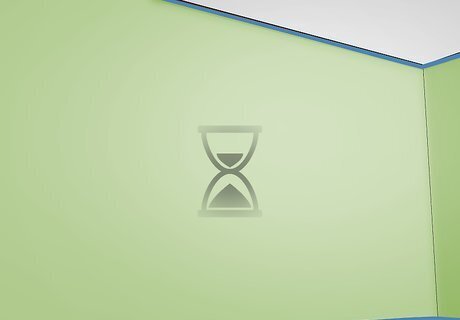
Let the chalkboard dry thoroughly. You will want to let the chalkboard air dry, rather than speeding the process along. Make sure that you leave enough time for the chalkboard to thoroughly dry before you really need to use it again. If you write with chalk on a wet chalkboard, it can cause stubborn stains that can be very difficult to remove. After you’ve cleaned the chalkboard, you can speed up the drying process by wiping down the whole board with a soft, dry cloth.

Clean a chalkboard wall. Some people have chalkboard walls in their homes that can be pretty unsightly if they aren’t properly cleaned. Try adding a drop of dish soap to a bucket of water. Using a soft cloth, wipe down the chalkboard. Remove chalkboard paint with a regular eraser or damp cloth. Chalkboard paint can be removed the same way as chalk on a chalkboard. However, it’s possible that it will be harder to clean. Try wiping the area with a dampened cloth. After it dries, apply more chalkboard paint.














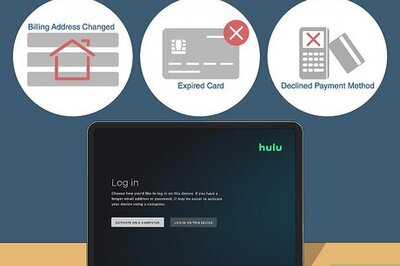



Comments
0 comment